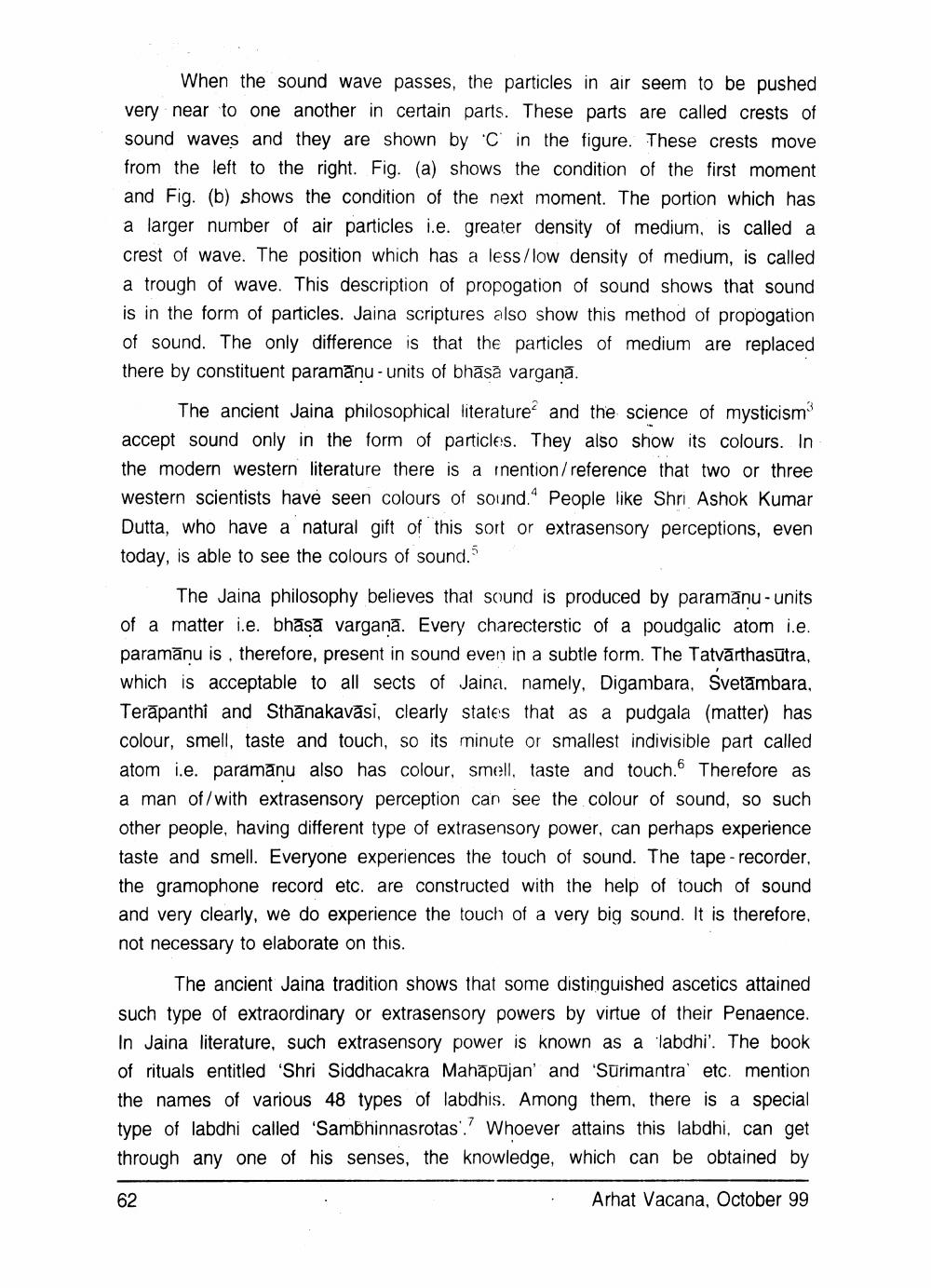________________
When the sound wave passes, the particles in air seem to be pushed very near to one another in certain parts. These parts are called crests of sound waves and they are shown by C in the figure. These crests move from the left to the right. Fig. (a) shows the condition of the first moment and Fig. (b) shows the condition of the next moment. The portion which has a larger number of air particles i.e. greater density of medium, is called a crest of wave. The position which has a less/low density of medium, is called a trough of wave. This description of propogation of sound shows that sound is in the form of particles. Jaina scriptures also show this method of propogation of sound. The only difference is that the particles of medium are replaced there by constituent paramānu - units of bhāsā varganā.
The ancient Jaina philosophical literature and the science of mysticism accept sound only in the form of particles. They also show its colours. In the modern western literature there is a inention/reference that two or three western scientists have seen colours of sound. People like Shri Ashok Kumar Dutta, who have a natural gift of this sort or extrasensory perceptions, even today, is able to see the colours of sound."
The Jaina philosophy believes that sound is produced by paramānu-units of a matter i.e. bhāsā vargana. Every charecterstic of a poudgalic atom i.e. paramānu is, therefore, present in sound even in a subtle form. The Tatvārthasūtra, which is acceptable to all sects of Jaina, namely, Digambara, Svetāmbara, Terāpanthi and Sthānakavāsi, clearly states that as a pudgala (matter) has colour, smell, taste and touch, so its minute or smallest indivisible part called atom i.e. paramānu also has colour, smell, taste and touch. Therefore as a man of /with extrasensory perception can see the colour of sound, so such other people, having different type of extrasensory power, can perhaps experience taste and smell. Everyone experiences the touch of sound. The tape - recorder, the gramophone record etc. are constructed with the help of touch of sound and very clearly, we do experience the touch of a very big sound. It is therefore, not necessary to elaborate on this.
The ancient Jaina tradition shows that some distinguished ascetics attained such type of extraordinary or extrasensory powers by virtue of their Penaence. In Jaina literature, such extrasensory power is known as a labdhi'. The book of rituals entitled 'Shri Siddhacakra Mahāpujan' and 'Sūrimantra' etc. mention the names of various 48 types of labdhis. Among them, there is a special type of labdhi called 'Sambhinnasrotas. Whoever attains this labdhi, can get through any one of his senses, the knowledge, which can be obtained by
Arhat Vacana, October 99
62




